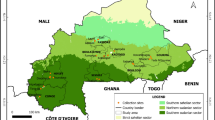Summary
When Asiatic lilies are forced during the winter period, additional light is needed to prevent flower bud abscission and flower bud blasting. Growth room experiments showed considerable differences among eight lily cultivars in their response to low light. Among these cultivars, ‘Connecticut King’ and ‘Enchantment’ appeared to be the most sensitive to low light conditions while ‘Uncle Sam’ and ‘Scout’ were the least sensitive.
Analysis of an incomplete diallel cross between nine cultivars showed significant differences in general combining ability (GCA) for flower bud abortion, number of buds, forcing time, plant height and leaf scorch under winter greenhouse conditions. ‘Enchantment’ had the highest positive GCA for bud abortion, indicating a high sensitivity to low light conditions. ‘Uncle Sam’ had the lowest GCA. ‘Pirate’ and ‘Scout’ appeared to have a high GCA for sensitivity to leaf scorch. ‘Connecticut King’ was found to be a probable source of cytoplasmic male sterility. The data suggest that male sterility is associated with better response to low light conditions.
Similar content being viewed by others
References
Berghoef J., G. S.Kappelhof & B.Willems, 1981. Bestrijding bladverbranding by lelie ‘Pirate’ vereist verder onderzoek. Vakblad voor de Bloemisterij. 36(22): 22–23.
DDe Graaff, J. & E. Hornback, 1967. Origin of the mid-century hybrids. The Royal Horticultural Society. The Lily yearbook 1967 (30): 26–29.
Durieux A. J. B., 1975. Additional lighting of lilies (cv. Enchantment) in the winter to prevent flower bud abscission. Acta Hortic. 47: 237–240.
Durieux A. J. B., G. A.Kamerbeek & U.vanMeeteren, 1983. On the existence of a non-critical period for blasting of flower buds of Lilium ‘Enchantment’; influence of light and ethylene. Scientia Hortic. 18: 287–297.
Garretsen Frida & M.Keuls, 1978. A general method for the analysis of genetic variation in complete and incomplete diallels and North Carolina II (NCII) designs. Part II. Procedures and general formulas for the fixed model. Euphytica 27: 49–68.
Kamerbeek G. A. & A. J. B.Durieux, 1971. Influence of light on flower bud abscission in plants of the lily cultivar Enchantment. Acta Hortic. 23: 71–74.
Smeets L., 1978. The phytotron of the Institute for Horticultural Plant Breeding (IVT), Wageningen, the Netherlands. A revision of previous descriptions. Neth. J. Agric. Sci. 26: 8–12.
VanMeeteren U., 1982. Light controlled flower bud abscission of Lilium ‘Enchantment’ is not mediated by photosynthesis. Acta Hortic. 128: 37–45.
VanMeeteren U. & M.deProft, 1982. Inhibition of flower bud abscission and ethylene evolution by light and silver thiosulphate in Lilium. Physiol. Plant 56: 236–240.
VanNes C., 1979. Onderzoek bladverbranding lelie cv. Pirate. Vakblad voor de Bloemisterij. 34(43): 36–37.
Wadekamper J., 1977. ‘Connecticut King’ as a parent in lily hybridizing. The lily yearbook N.A.L.S. 30: 115–118.
Author information
Authors and Affiliations
Rights and permissions
About this article
Cite this article
van Tuyl, J.M., van Groenestijn, J.E. & Toxopeus, S.J. Low light intensity and flower bud abortion in Asiatic hybrid lilies. I. Genetic variation among cultivars and progenies of a diallel cross. Euphytica 34, 83–92 (1985). https://doi.org/10.1007/BF00022866
Received:
Issue Date:
DOI: https://doi.org/10.1007/BF00022866




